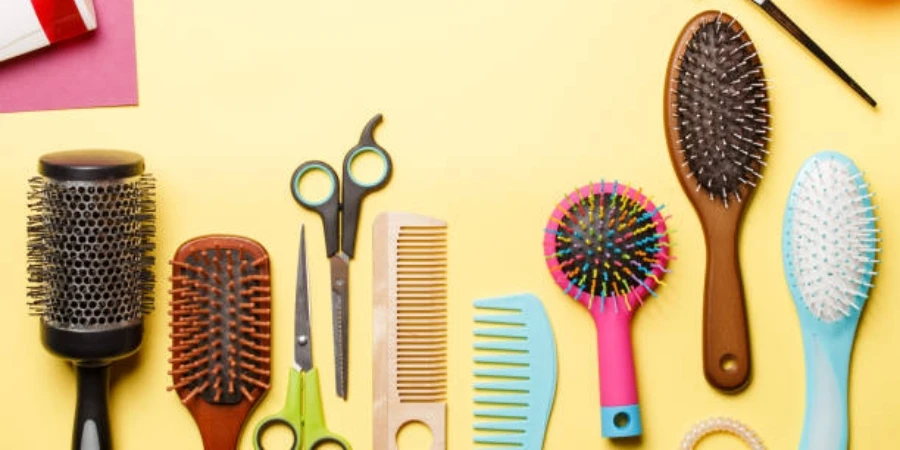Table of Contents
● Introduction
● Discover the different types of combs and their ideal uses
● What’s shaping the comb market in 2025
● Key factors for selecting the perfect comb
● Conclusion
Introduction
Combs are vital tools in hair care, used daily to detangle, style, and maintain healthy hair across all textures. They perform various functions, from smoothing fine strands to managing thick curls, depending on their design and material. In 2025, demand is increasing for combs that provide enhanced benefits, such as reducing frizz, minimizing breakage, and promoting scalp health. Sustainability is also a significant consideration, with eco-friendly materials like bamboo and wood gaining popularity, making modern combs both practical and environmentally responsible.
Discover the different types of combs and their ideal uses
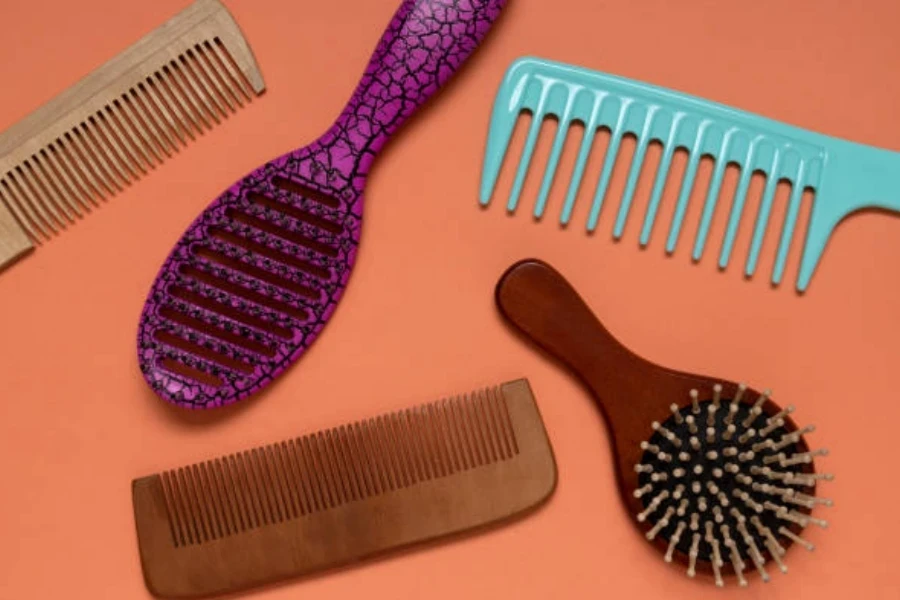
Wide-tooth combs: The detangling masters
Wide-tooth combs are essential for individuals with curly, wavy, or thick hair. Their broad, spaced-out teeth glide effortlessly through tangles, making them ideal for wet hair, especially after applying conditioner. This design reduces breakage by minimizing strain on individual strands, preserving natural texture.
Additionally, wide-tooth combs effectively distribute treatments like conditioners and serums, enhancing hair’s overall appearance. They also help reduce frizz, which is crucial for managing thick and wavy hair. As curly and textured hairstyles gain popularity, wide-tooth combs are becoming staples in households and salons alike.
Fine-tooth combs: Precision and sleekness in every stroke
Fine-tooth combs serve a different purpose, primarily aimed at people with fine or straight hair. The tightly spaced teeth are designed to smooth and polish hair, making them excellent for achieving sleek, defined styles. Fine-tooth combs are particularly effective at taming flyaways and creating precise parts, offering a refined finish that is harder to achieve with wider-tooth alternatives.
These combs, however, are not suited for detangling thick or curly hair. They are best used on hair that is already tangle-free, to give the final touch in creating a smooth, elegant look. Fine-tooth combs are also favored in professional settings for more intricate styling needs, such as updos or structured haircuts.
Pocket combs: Compact and versatile for on-the-go styling
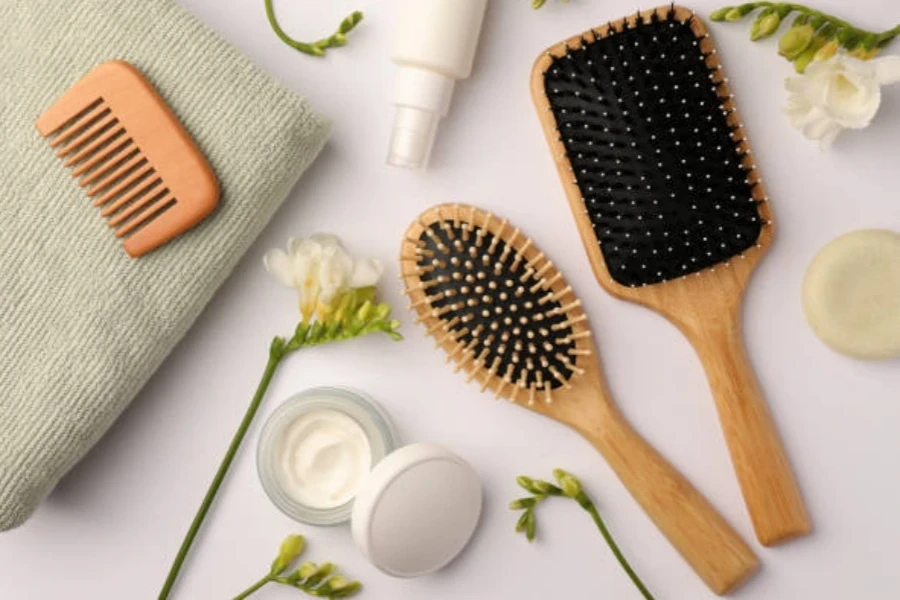
Pocket combs provide a convenient solution for maintaining hairstyles on the go. Despite their small size, they often feature both fine and wide-tooth sides, making them versatile for various hair types. Their compact design allows for quick touch-ups, whether taming stray locks or smoothing flyaways before an event.
Durable and sturdy, pocket combs withstand daily use without bending or breaking. Once favored by men for quick grooming, they are now popular among anyone seeking compact, functional hair tools that easily fit in purses or pockets.
Wooden combs: The natural choice for hair and the environment
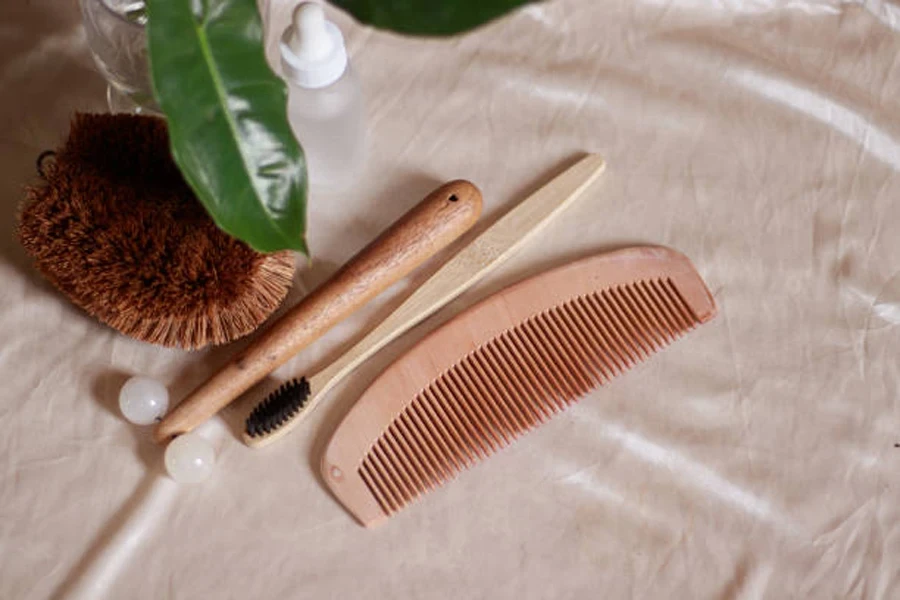
Wooden combs have gained popularity for their effectiveness and environmental benefits. Made from sustainable materials, they provide an eco-friendly alternative to plastic. Beyond their green appeal, wooden combs enhance hair health by evenly distributing natural oils from the scalp, resulting in shinier, healthier hair.
Gentle on the scalp, they reduce static and prevent frizz, making them particularly beneficial for dry or frizzy hair. Their smooth texture allows for effortless detangling without causing breakage or pulling. As consumers increasingly prioritize eco-conscious grooming tools, wooden combs have become favorites for their durability and aesthetic appeal.
What’s shaping the comb market in 2025

Sustainability takes center stage
As environmental consciousness rises globally, the grooming industry is prioritizing sustainability. The shift from traditional plastic combs to materials like bamboo and wood reflects the demand for eco-friendly grooming tools. Biodegradable combs not only attract environmentally conscious consumers but also help reduce plastic waste. Brands are responding by producing high-quality, durable wooden combs that are both functional and sustainable.
These natural-material combs provide significant hair care benefits as well. Wooden combs distribute natural oils along the hair shaft, minimizing the need for synthetic treatments, and they reduce static, making them popular for frizz control without chemicals. As consumers increasingly seek ethical options, the demand for eco-friendly combs is expected to grow, signaling a significant market shift.
Smart combs with tech-driven enhancements
Technological advancements are transforming grooming products, and combs are no exception. In 2025, “smart combs” are emerging, incorporating features like anti-static technology, heat resistance, and scalp health sensors to enhance hair care routines. These innovative tools attract tech-savvy consumers looking for multifunctional solutions.
Anti-static properties are crucial for those dealing with frizz, while heat-resistant combs benefit frequent heat stylers. Some smart combs even include sensors that assess scalp moisture and overall hair health, offering a personalized hair care experience. This integration of technology elevates grooming products, enabling users to make informed decisions about their hair routines.
Customization is the new standard
As hair care routines become more personalized, the demand for customized grooming tools is rapidly increasing. Combs tailored to specific hair types, lengths, and textures are gaining popularity, addressing unique hair challenges. Manufacturers are responding by designing combs for everything from fine, straight hair to thick, curly locks.
For instance, those with curly or textured hair often prefer wide-tooth combs to minimize breakage and frizz, while individuals with fine hair may opt for fine-tooth combs for precision. Customization also extends to materials, offering choices from traditional plastic to eco-friendly options like wood and bamboo.
In 2025, the comb market reflects a broader trend toward environmentally conscious, technologically advanced, and personalized products. These developments are reshaping the future of hair care tools, as consumers seek combs that align with their values and grooming needs.
Key factors for selecting the perfect comb
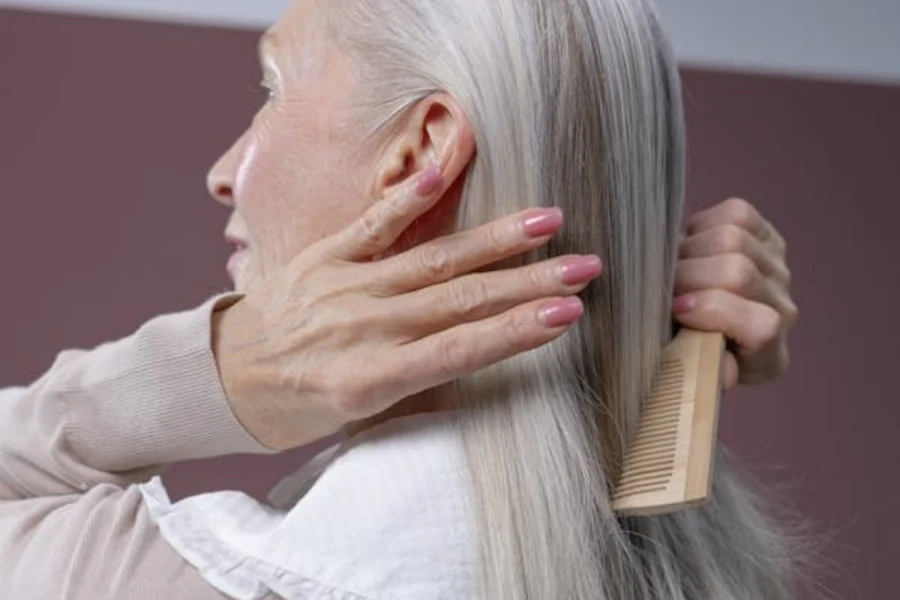
Matching the comb to hair type
Selecting the perfect comb begins with matching it to the hair type. Different textures and thicknesses require specific designs to ensure effective grooming without damage. For thicker, curly, or wavy hair, wide-tooth combs are essential; they detangle easily and minimize frizz, making them ideal for both dry and wet hair.
Fine-tooth combs are better suited for straight or fine hair, providing precision and control for sleek styles. Specialty combs, like afro picks, cater to textured or coily hair, adding volume and shape without compromising integrity. Properly matching combs to hair types enhances the grooming experience and reduces wear and tear.
Material matters: Go beyond plastic
The material of a comb significantly impacts hair health. While plastic combs are popular for their affordability and lightweight design, wooden and bamboo options are gaining favor due to their advantages. Wooden combs are particularly valued for their anti-static properties, effectively reducing flyaways and frizz, especially in dry conditions.
Bamboo combs, known for their eco-friendly qualities, also appeal to consumers as sustainability becomes a priority. These natural-material combs not only promote hair health by distributing natural oils, enhancing shine and softness, but they also help reduce environmental impact. For those seeking eco-conscious grooming solutions, wooden and bamboo combs offer both functional and ethical benefits.
Durability and versatility
Another crucial factor to consider when selecting a comb is its durability and versatility. High-quality combs that last longer not only offer better value but also reduce the frequency of replacements, which is both cost-effective and environmentally friendly. Combs made from sturdy materials such as hardwood or durable plastics are less prone to breakage, making them a worthwhile investment.
Versatility is also important in a comb, especially in multifunctional grooming tools. Combs that combine detangling and styling features, for example, provide a comprehensive grooming solution in one tool, catering to various hair care needs. A durable comb that adapts to different hair textures, whether for everyday use or specific styling needs, offers long-term value and enhanced functionality.
Conclusion
In 2025, choosing the right comb involves careful consideration of hair type, materials, and emerging trends in sustainability and technology. The market features a diverse array of options, from eco-friendly wide-tooth combs for detangling thick hair to fine-tooth combs for sleek styling. Technological advancements and durable, multi-functional designs broaden the choices, ensuring an ideal comb for every grooming need. By prioritizing hair health and environmental impact, these innovations represent a significant evolution in the comb industry.
